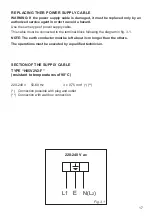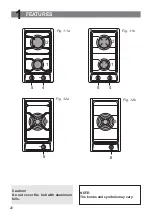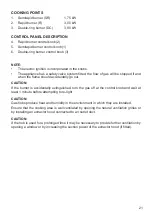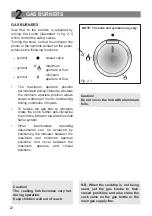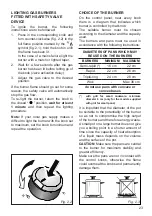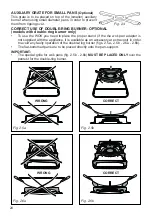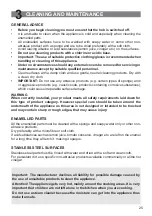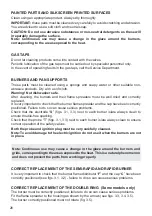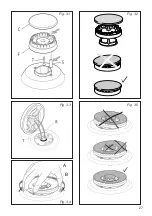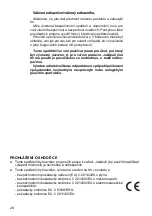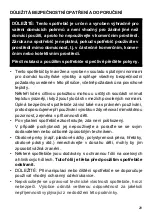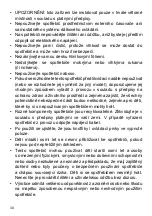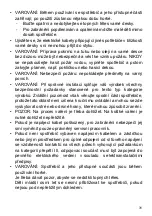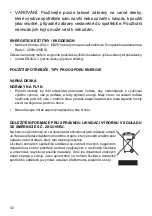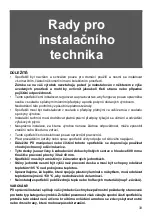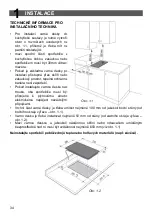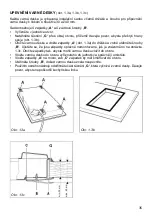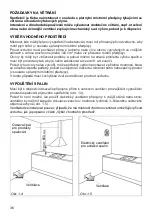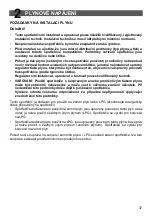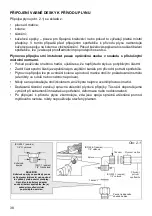
23
23
LIGHTING GAS BURNERS
FITTED WITH SAFETY VALVE
DEVICE
To ignite the burner, the following
instructions are to be followed:
1. Press in the corresponding knob and
turn counter-clockwise (fig. 2.2) to the
full flame position marked by the
symbol (fig. 2.1); hold the knob in until
the flame has been lit.
In the case of a mains failure light the
burner with a match or lighted taper.
2. Wait for a few seconds after the gas
burner has been lit before letting go of
the knob (valve activation delay).
3. Adjust the gas valve to the desired
position.
If the burner flame should go out for some
reason, the safety valve will automatically
stop the gas flow.
To re-light the burner, return the knob to
the closed “ ” position,
wait for at least
1 minute
and then repeat the lighting
procedure.
Note:
If your local gas supply makes it
difficult to light the burner with the knob set
to maximum, set the knob to minimum and
repeat the operation.
Fig. 2.2
CHOICE OF THE BURNER
On the control panel, near every knob
there is a diagram that indicates which
burner is controlled by that knob.
The suitable burner must be chosen
according to the diameter and the capacity
used.
The burners and pans must be used in
accordance with the following instructions:
DIAMETERS OF PANS WHICH MAY
BE USED ON THE BURNERS
BURNERS
MINIMUM MAXIMUM
Semi-rapid (*)
16 cm
22 cm
Rapid
22 cm
26 cm
Triple-ring
24 cm
28 cm
Wok
-
Max 36 cm
do not use pans with concave or
convex bases
(*)
with grill for small cookware: minimum
diameter 6 cm (only for the models supplied
with grill for small pans)
It is important that the diameter of the pot
be suitable to the potentiality of the burner
so as not to compromise the high output
of the burners and therefore energy waste.
A small pot on a large burner does not give
you a boiling point in a shorter amount of
time since the capacity of heat absorption
of a liquid mass depends on the volume
and the surface of the pot.
CAUTION:
Make sure the pans are central
to the burner for maximum stability and
greater efficiency.
Make sure the pans are not in contact with
the control knobs, otherwise the flame
could overheat the knobs and permanently
damage them.
Fig. 2.3
Summary of Contents for DOMINO Series
Page 18: ...18 18...
Page 19: ...19 19 Advice for the users...
Page 27: ...27 27 Fig 3 1 Fig 3 2 Fig 3 3 Fig 3 4 Fig 3 5 S F C T A B S T...
Page 44: ...44...
Page 45: ...45 Rady pro u ivatele...
Page 53: ...53 Obr 3 2 Obr 3 3 Obr 3 5 Obr 3 4 Obr 3 1...
Page 70: ...70...
Page 71: ...71 Consejos para los usuarios...
Page 79: ...79 Fig 3 2 Fig 3 3 Fig 3 5 Fig 3 4 Fig 3 1...
Page 96: ...96...
Page 97: ...97 Savjeti za korisnike...
Page 105: ...105 Sl 3 2 Sl 3 3 Sl 3 5 Sl 3 4 Sl 3 1...
Page 122: ...122...
Page 123: ...123 Conselhos para os utilizadores...
Page 131: ...131 Fig 3 2 Fig 3 3 Fig 3 5 Fig 3 4 Fig 3 1...
Page 148: ...148...
Page 149: ...149 Recomand ri pentru utilizatori...
Page 157: ...157 Fig 3 2 Fig 3 3 Fig 3 5 Fig 3 4 Fig 3 1...
Page 174: ...174...
Page 175: ...175 Rady pre pou vate ov...
Page 183: ...183 Obr 3 2 Obr 3 3 Obr 3 5 Obr 3 4 Obr 3 1...
Page 200: ...200...
Page 201: ...201 Nasveti za uporabnike...
Page 209: ...209 Slika 3 2 Slika 3 3 Slika 3 5 Slika 3 4 Slika 3 1...
Page 226: ...226...
Page 227: ...227 Consigli per gli utenti...
Page 235: ...235 Fig 3 1 Fig 3 2 Fig 3 3 Fig 3 5 Fig 3 4...
Page 236: ......









